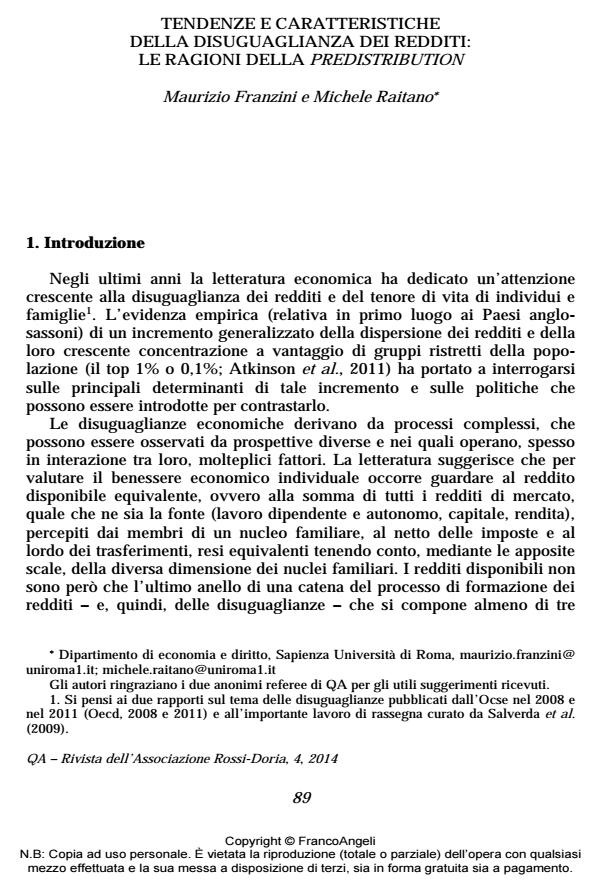Tendenze e caratteristiche della disuguaglianza dei redditi: le ragioni della predistribution
Journal title QA Rivista dell’Associazione Rossi-Doria
Author/s Maurizio Franzini, Michele Raitano
Publishing Year 2015 Issue 2014/4
Language Italian Pages 29 P. 89-117 File size 114 KB
DOI 10.3280/QU2014-004005
DOI is like a bar code for intellectual property: to have more infomation
click here
Below, you can see the article first page
If you want to buy this article in PDF format, you can do it, following the instructions to buy download credits

FrancoAngeli is member of Publishers International Linking Association, Inc (PILA), a not-for-profit association which run the CrossRef service enabling links to and from online scholarly content.
Tendencies and Features of Income Inequality: Motivating Predistribution Income inequality raises serious problems because of its extent and its features. This paper starts from the empirical evidence on trends in disposable income inequality in the major OECD countries, distinguishing the roles played by market inequalities and by public redistribution. It then goes on to discuss,, on the one hand, the reasons why an anti-inequality strategy based on redistributive measures only, even if necessary, may not be enough and, on the other hand, the merits of a predistribution strategy, i.e. of measures designed to prevent the development of inequalities in the markets, acting both on individual endowments and on the rules supporting the functioning of the markets. EconLit Classification: D310, I240, I380, J310
Keywords: Economic inequality, Human capital, Redistribution, Predistribution
Maurizio Franzini, Michele Raitano, Tendenze e caratteristiche della disuguaglianza dei redditi: le ragioni della predistribution in "QA Rivista dell’Associazione Rossi-Doria" 4/2014, pp 89-117, DOI: 10.3280/QU2014-004005